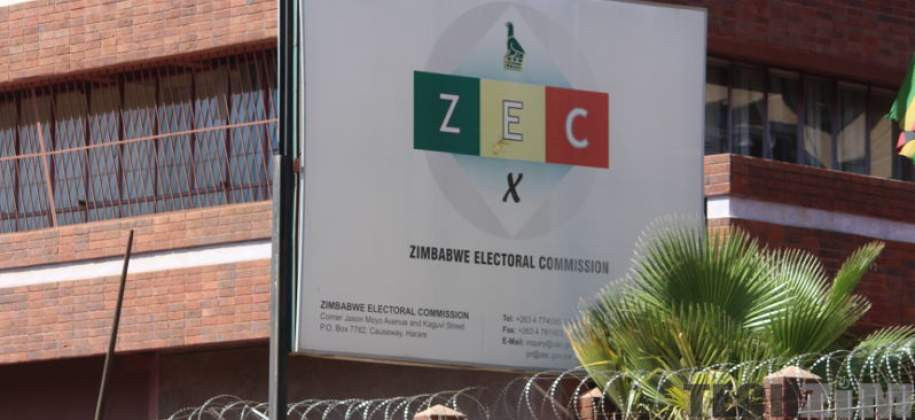
THE term Central Bank Digital Currencies (CBDCs) has become part of the latest phraseology in the sphere of financial economics, with every keen scholar and practitioner in this area, eager to get the inside information.
However, the downside is that no entity has had the opportunity to experience this field, enough to be an authority in it. The idea behind creating CBDCs has been focused on transitioning from bank notes and coins, in order to replace them with digital currency.
CBDCs will be a liability of the central bank, just as notes and coins. Around 2014, central banks around the world, with an emphasis on China, were perturbed by the proliferation of dominant cryptocurrencies, such as Bitcoin, which had become viable investment and transactional vehicles for their populations.
The dominance of Bitcoin would mean that the central banks would lose control over their monetary policy, gradually, as they would no longer determine interest rates and money supply with as much precision.
Additionally, the announcement by Facebook of plans to launch their own cryptocurrency, called Libra (now Diem), in 2019, made the need to speed up research and implementation of the CBDCs, imperative.
Facebook’s entry was worrisome because the company has access to approximately two-thirds of the world’s population. Among the nations that have already introduced the digital fiat currency, are, Bahamas, Jamaica, Eastern-Caribbean nations (An economic bloc of eight countries) and Nigeria.
The term CBDC remains more of a buzzword though, as the adoption has been almost insignificant in those jurisdictions where the digital currency was launched. Most of the nations that have introduced CBDC are witnessing an uptake of less than 2% of the total population.
Having mentioned that, CBDCs are mainly viewed as a product for the future. It is also urgent to understand what is ongoing in the dominant economies of China, the European Union (EU) and United States (US), in this field.
- The brains behind Matavire’s immortalisation
- Red Cross work remembered
- All set for inaugural job fair
- Community trailblazers: Dr Guramatunhu: A hard-driving achiever yearning for better Zim
Keep Reading
In developing CBDCs, a central bank creates a database, which contains details of each individual such as, name, available cash balance, and record of past financial transactions. Companies will also have their own details in the records.
In order for the public to use the currency, they will approach either the central bank or participating commercial banks, and open CBDC wallets where they will either exchange physical cash for CBDCs or receive their incoming cash balances upon earning salaries or revenue, within their wallets.
The wallet will be connected to cell phones, computer platforms and other devices so that when an individual wants to purchase a commodity in the market, they will use their gadget instead of bank notes and coins.
Unlike exclusive cryptocurrencies, the technology used to maintain CBDC records will not depend on distributed ledgers, such as the case with Bitcoin, but central ledgers. This will come with the advantage of higher transaction processing speed and greater security when compared to cryptocurrencies.
Although CBDCs are originally meant to replace bank notes and coins, some experts are convinced that there might be an eventual transition to encompass all bank balances in the economy.
A major benefit of using CBDC is that there is increased safety. The risk of losing bank notes to thieves and any other physical damage is eliminated. When carrying out transactions, it also becomes much easier to pay for goods and services.
There is no longer the need to count huge amounts of bank notes and work out a client's change, thereby improving efficiency. Where CBDCs have already been launched, the indication is that there are no transaction charges levied as with payments mediums, such as Visa, MasterCard debit cards, or credit cards, etc.
Unlike bank notes and coins, CBDC will not be damaged physically through wear and tear. This reduces cost to government through eliminating the need to print new notes. There is also the outstanding advantage of financial inclusion.
With limited requirements, such as, proof of ID and address only, for instance, most individuals will be able to open new CBDC accounts. This is unlike having to produce a salary advice slip, an opening minimum balance amount and the typical KYC requirements of traditional banks.
In the case of a crisis, such as, an earthquake or flood, for instance, the government can be able to send cash payments to each affected individual or household, directly to their phone, after the event.
Manual payments will likely take longer to reach the recipients and may be pilfered easier. In the case of monetary or fiscal policy implementation, central banks may be able to provide cash payments to individuals in a particular geographical area with depressed demand, with the aim of improving economic activity.
CBDCs can then be programmed so that the received payments will only be used in that geographical region and not elsewhere. Money laundering and tax evasion will also become harder as CBDC will show the trail that all expenditure has charted.
The CBDCs also present unfavourable outcomes, depending on one's perspective. The major issue is that they are an existential threat to the traditional banks. Commercial banks are likely to lose some of their revenue, in the transition from bank notes to digital fiat currencies.
Some clients will move their bank balances from the commercial banks, into CBDC wallets. This is because they will not be charged monthly fees and a minimum monetary balance will not be required to maintain the CBDC account, unlike with commercial banks.
To solve this conundrum, some experts have suggested that, there should be a maximum limit which each wallet should not exceed, so that there is no disintermediation of banks. With CBDCs, governments can be able to monitor historical transactions of each individual, thereby removing privacy.
Additionally, the issuing authority will be able to block an account which does not operate in accordance with the jurisdiction's requirements, such as those belonging to dissident organisations. The bother that some have, regarding this, is that, in the case where governments may be unfair, some CBDC wallets may be blocked unjustly.
In some extreme cases, the CBDC currency may be programmed to complete certain transactions, whilst failing in others. For example, it can be programmed to block alcohol purchases on a week-day or during certain times. To some, this method of enforcement equals government manipulation and total control.
The Bahamas was the first jurisdiction to introduce a functional CBDC in October 2020. Members of the public were encouraged to open new wallets to accommodate the Sand dollar, as their CBDC is called.
There has been an uninspiring rollout of the system as, by November 2022, only 1% of their population had transacted using the Sand dollar. Not all merchants were accepting the currency and that stands out because CBDC is ideally supposed to be legal tender.
There was also no interoperability between the system and the main Bahamian dollar system. This means that the two funds could not mix in one account. Private banks were not fully supporting the programme as it was obvious that it had the potential to undercut their revenues.
Public awareness of the system was found lacking with more needing to be done. Going forward, the Central Bank of the Bahamas (CBB) has determined to correct the malformation and enlisted the services of a PR company to promote the Sand Dollar.
Eight nations of the Eastern-Caribbean, also launched their CBDC in March 2021, through the Eastern Caribbean Central Bank (ECCB). The ECCB digital fiat currency commonly known as "DCash", has largely failed to serve the market without detrimental incidences.
On 14 January 2022, the DCash system failed and had a system-wide outage, whilst bearing CBDC wallets of the public.
The downtime was not brief but it stretched for a whole two months and led to questions of whether the world is ready for CBDCs and the pertinent eventualities.
This will undoubtedly deter uptake, which may well be in the range of 1% of the population or less.
On October 25 2021, Nigeria launched their CBDC, known as the eNaira. In as far as six months from the launch, only 0,5% of the Nigerian population had used the currency.
Cryptocurrencies such as Bitcoin remain more popular in the West-African nation, when compared to the eNaira. For contextual clarity, around 45% of Nigerians use cryptocurrencies, which dwarfs the eNaira uptake.
It may also be key to note that Nigeria ranks first, globally, in terms of usage of cryptocurrencies. With such a situation, the Central Bank of Nigeria had to create incentives to increase usage of the eNaira, so that they would reclaim sovereignty over their monetary policy.
The authorities introduced discounts on purchases using the eNaira, payments to civil servants using the CBDC and reduced total availability of bank notes in circulation in order to encourage the market to use the digital fiat currency.
Nevertheless, the shortage of bank notes in circulation led to violent street protests in February 2023. To date, more people are using the eNaira for transactions than before but it can be observed, from the Nigerian experience, that it remains difficult to legislate demand for CBDC.
Zimbabwe has announced its plans to launch a gold-backed CBDC, from 8 May. The CBDC can be used as legal tender, store of value and a hedge against exchange rate volatility. It will be available for sale to the public in the local currency and also the U.S. dollar.
With limited information still available, more will be revealed in the progression of time. Some experts may argue that it makes good economic sense to sell the CBDC strictly in the local currency, so as to uphold the demand of the currency against the U.S. dollar. This avenue is feasible on condition that the USD/ZWL exchange rate is floated, so that the government gets fair value for their gold, the same analysts maintain. More is to be observed after the launch.
Other major economies have also communicated their CBDC development strategies. China is already in the pilot phase of development and will likely be the first major economy to launch their sovereign digital currency, known as the electronic Yuan (e-CNY).
The successes that it has experienced in the testing phase, in major cities such as Shanghai and Beijing, are promising.
For China, it should be much easier to integrate the system into the market since the state owns the banks and any loss of revenue to them along the way, is not a threat. The success and growth of the e-CNY will indicate a direction towards an internationalization of the Yuan (RMB) and structural changes in international finance.
The EU and the US are lagging behind. With an expectation of a pilot programme launch in September for the EU, the US has not set a public timeline yet and is placing more focus on their real-time payments system called, FedNow, to be released later this year.
Tutani is a political economy analyst. — [email protected].











